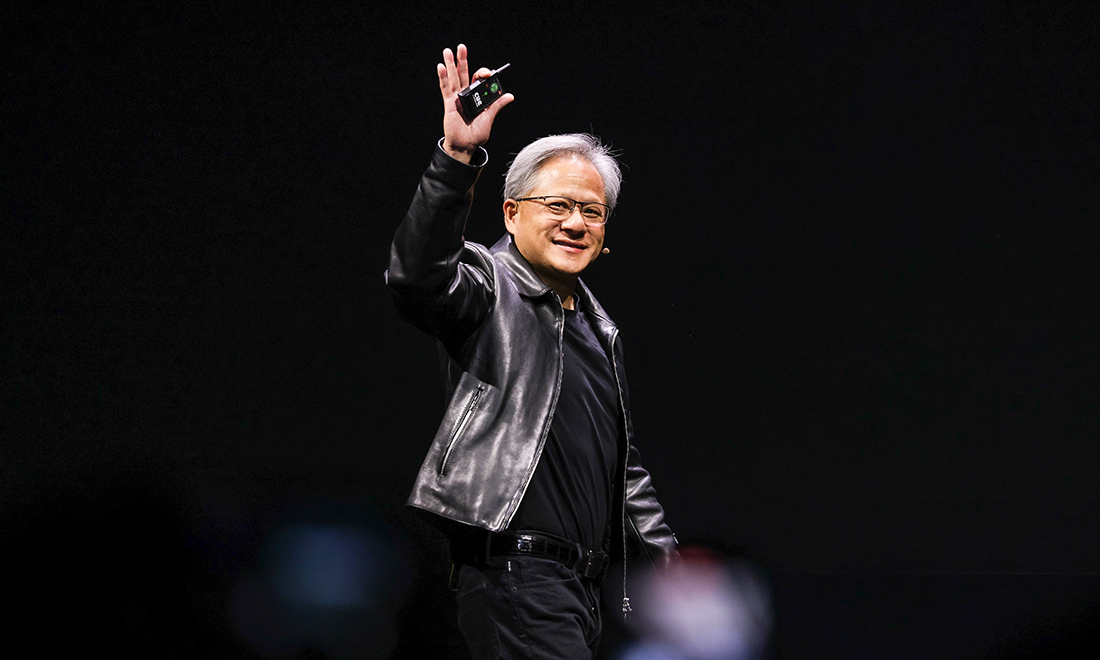
做空者通过做空美国股市中被大多数投资者忽视的一个板块——小盘股而大赚一笔。
据S3 Partners LLC基于市场平均空头头寸估算,今年以来,通过押注小盘股、微型股和超微型股价格下跌,做空者已经获得了近130亿美元的账面利润。与此形成鲜明对比的是,做空中盘股、超大盘股和大盘股造成了约1,400亿美元的损失,这些股票在今年的大部分时间里都在上涨,原因是经济形势不受悲观预测的影响,美联储(Federal Reserve)的加息周期已经临近尾声,而且人工智能领域的重大突破引发了科技股的暴涨。
由于英伟达公司(Nvidia Corp.)、Meta Platforms Inc.和特斯拉(Tesla Inc.)等公司推动了股市的大部分涨幅,这一差异凸显了股市中出现的鸿沟。衡量小型公司的指标罗素2000指数(Russell 2000)里超过一半的成份股今年下跌,使该指数的涨幅仅为5%,远低于标准普尔500指数(S&P 500)16%的涨幅。
盈透证券(Interactive Brokers)的首席策略师史蒂夫·索斯尼克说:“今年的表现在很大程度上与人工智能热潮有关,大型科技股涨幅过大。目前,今年还是做空者获利较多。”
从6月到7月,小盘股也加入了股市的反弹行列。但在最近的回调中,它们受到的打击最大,根据S3的数据,自8月以来,做空者估计获利约97亿美元。
据美国银行(Bank of America Corp.)的策略师援引EPFR Global公司的数据称,由于小盘股遭受重创,上周投资者从专注于该板块的基金中撤资15亿美元,为近三个月来最多的一次。相比之下,美国大盘股基金吸引了55亿美元的资金。
美国银行财富管理公司(U.S. Bank Wealth Management)的高级投资策略师罗布·霍沃斯称,表现不佳的一大原因是,由于投资者高度关注特定行业,行业权重抑制了投资者的兴趣。该基金几乎没有投资今年市场表现最好的科技板块,金融和能源板块的权重较高(这两类板块属于表现最差的板块)。小公司受经济放缓和货币政策收紧的影响最为严重。
霍沃斯说:“由于信贷环境收紧和贷款标准收紧,小公司往往首当其冲。这在某种程度上造就了给小盘股带来很大压力的环境。”
摩根士丹利(Morgan Stanley)的迈克·威尔逊一直在预测股市会下跌,他也同样警告投资者远离小盘股,因为这类股票的利润率更容易受到通货膨胀的侵蚀。
S3的数据显示,做空小盘股的交易在所有做空交易中所占比例不到10%。一些策略师预测,小盘股还有反弹的空间。例如,美国银行的吉尔·凯里·霍尔就曾经表示,如果经济持续增长,那些已经将衰退风险定价的细分市场最有可能跑赢大盘。
然而,做空者仍然在不断涌入。根据S3的数据,在过去30天里,做空者已经投入6.58亿美元做空小盘股,较上月有所增加。S3的数据显示,在过去一个月中,做空者对Archer Aviation Inc.公司、美国航空运输服务集团(Air Transport Services Group Inc.)、Alteryx Inc.公司和Sage Therapeutics Inc.公司的押注最多。
今年迄今为止,最赚钱的小盘股做空交易是押注遭受重创的地区性银行。据S3称,做空者对Lumen Technologies Inc.公司、Foot Locker Inc.公司和Beam Therapeutics Inc.公司的押注也获得了回报。(财富中文网)
译者:中慧言-王芳
做空者通过做空美国股市中被大多数投资者忽视的一个板块——小盘股而大赚一笔。
据S3 Partners LLC基于市场平均空头头寸估算,今年以来,通过押注小盘股、微型股和超微型股价格下跌,做空者已经获得了近130亿美元的账面利润。与此形成鲜明对比的是,做空中盘股、超大盘股和大盘股造成了约1,400亿美元的损失,这些股票在今年的大部分时间里都在上涨,原因是经济形势不受悲观预测的影响,美联储(Federal Reserve)的加息周期已经临近尾声,而且人工智能领域的重大突破引发了科技股的暴涨。
由于英伟达公司(Nvidia Corp.)、Meta Platforms Inc.和特斯拉(Tesla Inc.)等公司推动了股市的大部分涨幅,这一差异凸显了股市中出现的鸿沟。衡量小型公司的指标罗素2000指数(Russell 2000)里超过一半的成份股今年下跌,使该指数的涨幅仅为5%,远低于标准普尔500指数(S&P 500)16%的涨幅。
盈透证券(Interactive Brokers)的首席策略师史蒂夫·索斯尼克说:“今年的表现在很大程度上与人工智能热潮有关,大型科技股涨幅过大。目前,今年还是做空者获利较多。”
从6月到7月,小盘股也加入了股市的反弹行列。但在最近的回调中,它们受到的打击最大,根据S3的数据,自8月以来,做空者估计获利约97亿美元。
据美国银行(Bank of America Corp.)的策略师援引EPFR Global公司的数据称,由于小盘股遭受重创,上周投资者从专注于该板块的基金中撤资15亿美元,为近三个月来最多的一次。相比之下,美国大盘股基金吸引了55亿美元的资金。
美国银行财富管理公司(U.S. Bank Wealth Management)的高级投资策略师罗布·霍沃斯称,表现不佳的一大原因是,由于投资者高度关注特定行业,行业权重抑制了投资者的兴趣。该基金几乎没有投资今年市场表现最好的科技板块,金融和能源板块的权重较高(这两类板块属于表现最差的板块)。小公司受经济放缓和货币政策收紧的影响最为严重。
霍沃斯说:“由于信贷环境收紧和贷款标准收紧,小公司往往首当其冲。这在某种程度上造就了给小盘股带来很大压力的环境。”
摩根士丹利(Morgan Stanley)的迈克·威尔逊一直在预测股市会下跌,他也同样警告投资者远离小盘股,因为这类股票的利润率更容易受到通货膨胀的侵蚀。
S3的数据显示,做空小盘股的交易在所有做空交易中所占比例不到10%。一些策略师预测,小盘股还有反弹的空间。例如,美国银行的吉尔·凯里·霍尔就曾经表示,如果经济持续增长,那些已经将衰退风险定价的细分市场最有可能跑赢大盘。
然而,做空者仍然在不断涌入。根据S3的数据,在过去30天里,做空者已经投入6.58亿美元做空小盘股,较上月有所增加。S3的数据显示,在过去一个月中,做空者对Archer Aviation Inc.公司、美国航空运输服务集团(Air Transport Services Group Inc.)、Alteryx Inc.公司和Sage Therapeutics Inc.公司的押注最多。
今年迄今为止,最赚钱的小盘股做空交易是押注遭受重创的地区性银行。据S3称,做空者对Lumen Technologies Inc.公司、Foot Locker Inc.公司和Beam Therapeutics Inc.公司的押注也获得了回报。(财富中文网)
译者:中慧言-王芳
Short sellers are raking in profits by betting against a part of the US equity market overlooked by most investors: small-cap stocks.
The group has seen paper profits of nearly $13 billion this year by wagering on a drop in the prices of small-, micro- and nano-cap shares, according to an estimate by S3 Partners LLC based on the average amount of short positions in the market. That’s in stark contrast to the roughly $140 billion in losses from short sales of mid-, mega- and large-cap stocks, which rallied for much of the year as the economy defied gloomy forecasts, the Federal Reserve edged closer to ending its interest-rate hikes and breakthroughs in artificial intelligence triggered a stampede in tech stocks.
The difference underscores the gulf that opened up in the stock market as companies like Nvidia Corp., Meta Platforms Inc. and Tesla Inc. drove much of the gains. More than half of the stocks in the Russell 2000 — a gauge of smaller companies — have dropped this year, holding it to a 5% gain, far below the 16% jump in the S&P 500.
“So much of this year’s performance has been about AI enthusiasm, which disproportionately benefitted the largest tech stocks,” said Steve Sosnick, chief strategist at Interactive Brokers. “It’s been a top-down set of winners so far.”
The small-caps stocks joined in the equity-market rally from June through July. But they’ve been hit hardest during the recent pullback, with about $9.7 billion of short-sellers’ estimated profits emerging since August, according to S3’s data.
With the shares battered, investors withdrew $1.5 billion from funds focused on the segment last week, the most in nearly three months, according to Bank of America Corp. strategists, citing EPFR Global. By contrast, US large-cap stock funds pulled in $5.5 billion.
One reason for the underperformance is sector weightings that have curbed interest as investors focus heavily on particular industries, said Rob Haworth, a senior investment strategist at U.S. Bank Wealth Management. The group has little exposure to technology, the best-performing corner of the market this year, and heavier weightings in finance and energy, some of the worst laggards. Small companies are also the most heavily affected by economic slowdowns and tighter monetary policy.
“They also tend to be the companies that take the brunt of tighter credit conditions and tighter lending standards,” Haworth said. “I think that’s kind of created this environment that’s put a lot of pressure on small caps.”
Morgan Stanley’s Mike Wilson, who has been predicting a stock-market decline, has similarly warned investors to stay away from small-cap stocks, whose profit margins are more highly at risk of being eroded by inflation.
The bets against small cap stocks makes up less than 10% of all short selling, according to S3. And some strategists predict that small caps have room to rebound. Bank of America’s Jill Carey Hall, for example, has said segments of the market that have been pricing in the risk of a recession are most likely to outperform if the economy continues to grow.
Yet short sellers are still piling in. In the last 30 days, they have plowed $658 million into bets against small caps, an increase from the previous month, according to S3. The group has put the most money in bets against Archer Aviation Inc., Air Transport Services Group Inc, Alteryx Inc. and Sage Therapeutics Inc. in the last month, S3 data show.
The most profitable small-cap short trades so far this year are beaten-down regional banks. Bets against Lumen Technologies Inc., Foot Locker Inc. and Beam Therapeutics Inc. also paid off, according to S3.






